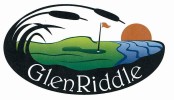Landscaping is required for all development within the Association and may include deciduous, evergreen, or ornamental trees, shrubs, groundcovers, perennials, and seasonal color (annuals).
Landscaping should consist of a limited variety of trees, shrubs, and groundcovers to create an attractive, well-designed, cohesive landscape.
Shrubs and ground covers should be planted in masses of a single species or cultivar in sufficient numbers to create beds or drifts of plants.
Plants should be selected based upon their ultimate height, width, and growth habit in relation to the space where they will be planted.
When planted adjacent to dwelling units, plantings should complement and not obscure the dwelling unit’s architectural features.
Plantings should be predominantly evergreen to assure a year-round landscape framework; plants should also be selected to provide strong seasonal and visual interest.
The use of indigenous, native species is encouraged.
Plantings shall generally be installed at the following minimum sizes to ensure a good initial appearance:
Shade Trees: Minimum 2 1/2” caliper
Ornamental/Flowering Trees: Minimum 2 ½” caliper
Evergreen Trees: Minimum 6’ – 8’ height
Large Shrubs: Minimum 36”
Medium Shrubs: Minimum 24”
Small Shrubs: Minimum 15”
Groundcovers: Minimum 4” pot
Except for natural areas, all portions of a lot that are not improved by an impervious surface or a structure must be maintained with grass (or other vegetation installed by a Participating Builder or Owner that is approved by the Architectural Control Committee) or landscaping.
No bare earth may be exposed on a lot (except for flower beds or vegetable gardens with appropriate approvals as required).
To help with water conservation, and keep excessive weed growth under control, it is recommended that trees, shrubs, and planting beds be mulched with shredded hardwood bark, pine bark, pine straw, or other materials that may be neatly maintained.
Widespread gravel, stone, wood chip, or other mulched areas are prohibited. Grass shall not be permitted to exceed six (6) inches in height.
Dead plants, shrubs, or trees shall be immediately removed.
All hedges, trees, and shrubs must be neatly trimmed and maintained and their size maintained in proportion to the lot and dwelling unit through pruning.
Pruning should respect the natural growth habits of the plants; plants should not be pruned into strict geometric shapes unless the design concept for the landscape requires formal shapes.
Approval by the Architectural Control Committee is required for the planting of hedges or screens that are anticipated to attain a height of more than two feet.
A hedge is defined as a repetitive mass linear planting of three or more shrubs, forming a solid, living barrier.
Hedges located forward of the front plane of a dwelling unit shall not be permitted to grow in excess of three feet and shall not restrict sightlines along a roadway.
Vegetable gardens are not permitted in front or side yards.
No live trees with a caliper (trunk diameter) in excess of 4 inches, measured 12 inches above the ground, nor flowering trees in excess of 2 inches similarly measured, no live vegetation on slopes of more than 20 percent gradient or market “no cut” or “tree save” or similar, on approved plans, may be cut without the prior approval of the Architectural Control Committee.



Post your comment on this topic.